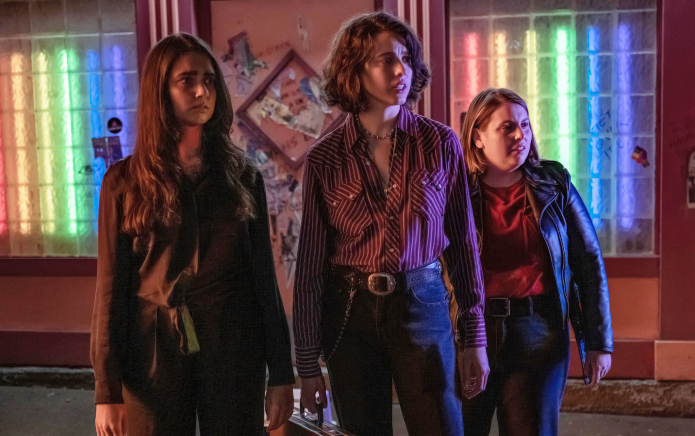
According to GLAAD’s 13th annual Studio Responsibility Index (SRI), there was a decrease in LGBTQIA+ representation in films last year.
The report “maps the quantity, quality, and diversity of LGBTQ characters in films released by the seven film studio distributors that had the highest theatrical grosses from films released in the 2024 calendar year.”
The distributors that the SRI analysed were as follows: The Walt Disney Studios, Apple TV+, Warner Bros., Paramount Global, Lionsgate, Sony Pictures Entertainment and Lionsgate.
The percentage of LGBTQIA+ inclusive films from major studios in 2024 decreased to 23.6%, compared to 27.3% in 2023 and the record high of 28.5% in 2022.
Trans representation was abysmal in the 250 films tracked, with only two major movies featuring trans characters, and both included either inauthentic casting or harmful stereotypes.
When it came to analysing screen time, it was revealed that 38% of LGBTQIA+ characters had less than one minute of screen time, while 27% had over 10 minutes, representing a significant decrease from the 38% in 2023.
In terms of racial diversity among the 181 LGBTQIA+ characters tracked, 115 were white (64 percent), 19 were Black (17 percent), 12 were Latine (seven percent), 18 were Asian/Pacific Islander (10 percent), nine were multiracial (five percent), three were Indigenous (two percent), and two were Middle Eastern and North African (MENA) (one percent).

While the number of Indigenous LGBTQIA+ characters slightly increased in 2024, there was a decrease in Black, Latine, MENA, and Multiracial representation.
LGBTQIA+ characters living with HIV were not included in any of the studied films, and only 4% had a disability.
Amid the troubling data, there were slight wins for the community, with LGBTQIA+ women seeing an increase in representation (50%) – outnumbering LGBTQIA+ men (48%) for the first time in five years.
The report also tracked “the quantity, quality, and diversity of LGBTQ characters in the year’s slate, as well as actions from the studios and parent companies that either supported or harmed the LGBTQ community.”

A24 was the only studio to receive a “good” rating, while NBCUniversal and Amazon were awarded a “fair” ranking. The remaining studios earned either “insufficient” or “poor” grades.
Lastly, under the SRI’s Bechdel Test-inspired Vito Russo Test – which analyses whether the inclusion of LGBTQIA+ characters within the narrative actually “matters” – only 18% of the total 250 films passed.
This marked a two percent decrease from 2024 (20%) and a four percent decrease from 2023 (22%).
GLAAD CEO & President Sarah Kate Ellis said in a statement: “This year’s findings are a wake-up call to the industry. At a time when LGBTQ people are facing unprecedented attacks in politics and news media, film must be a space for visibility and truth.

“Representation isn’t about checking a box — it’s about whose stories get told, whose lives are valued, and creating worlds that mirror our own society today. When done authentically, LGBTQ representation builds audience and buzz, while humanising LGBTQ people as those in power are actively working to take away our humanity.”
Megan Townsend, GLAAD’s Director of Entertainment Research and Analysis, echoed similar sentiments, adding that the “majorities of LGBTQ and non-LGBTQ 18-24 year olds (93% and 85%, respectively) reporting actively seeking out queer media.”
“The LGBTQ community is a powerful and growing audience with significant buying power and cultural clout that can drive success for a film,” she said.

“More than 1 in 5 (23.1%) Gen Z U.S. adults – a key ticket and subscription buying audience – are LGBTQ. Further, LGBTQ Americans 13-39 are more likely than non-LGBTQ peers to say they are a “diehard fan” of something, rating movies as the top thing they fan over.
“It’s clear that companies who are looking to grow their revenue should be deliberately courting this community with inclusive storytelling, targeted and specific marketing, and merchandise. When studios don’t tell LGBTQ stories, they’re ignoring an audience that represents over one trillion per year in U.S. spending power, and leaving profit on the table.”
You can read GLAAD’s full SRI report for 2025 here.



